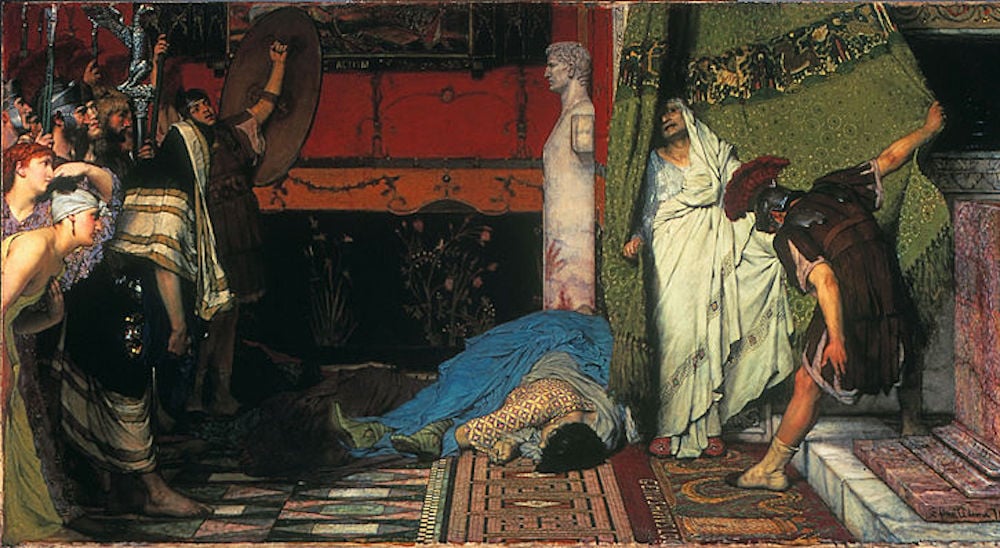
[Image] Roman emperor Caligula was murdered in 41 CE, about four years into his reign. The time-to-violent-death of Roman emperors is described surprisingly well by a probability distribution widely used in reliability engineering. Credit: Walters Art Museum, Wikimedia (CC BY-SA 3.0)
Have you ever seen the television show “Connections”? The 10-episode series, which first aired in 1978 (U.K.) and 1979 (U.S.), illustrated well the interdisciplinary history driving science and invention by tracing various discoveries, scientific achievements, and historical world events to show how they built from one another successively to bring about particular aspects of modern technology.
I love shows like “Connections” for two reasons—not only does seeing previously hidden connections between ostensibly disparate concepts and events provide a deeper understanding of how the world operates, it gives a deeper appreciation for the importance of different disciplines because they can all build off each other.
Finding opportunities to highlight such connections in my own work is a daily goal for me, so I was delighted when ACerS Fellow and National Institute of Standards and Technology researcher George D. Quinn sent us an email about just such a connection between ceramics and the lifespan of Roman emperors.
In the email, Quinn says another ACerS member, John D. Helfinstine, retired from Corning Glass Works-Sullivan Park, shared with him a recently published open-access paper on Roman emperors.
“Although at first glance it has nothing whatsoever to do with ceramics and glasses, it uses virtually the same Weibull statistics that we use and teach in ceramics and glasses,” Quinn says.
The Weibull distribution is a probability distribution widely used in reliability engineering. Named for Swedish engineer Waloddi Weibull, ceramists often use Weibull distribution to mathematically describe the variability of material strength resulting from a distribution of flaw sizes—in other words, time to material failure is determined by “failure of the weakest link.”
In the case of the Roman emperors paper, Georgia Institute of Technology associate professor of aerospace engineering Joseph Homer Saleh used the Weibull distribution to investigate a different kind of “failure”—violent death.
“This work adopts the statistical tools of survival data analysis to an unlikely population, Roman emperors, and it examines a particular event in their rule, not unlike the focus of reliability engineering, but instead of their time-to-failure, their time-to-violent-death,” he writes. “We investigate the temporal signature of this seemingly haphazardous stochastic process that is the violent death of a Roman emperor, and we examine whether there is some structure underlying the randomness in this process or not.”
Saleh found the time-to-violent-death displayed a bathtub-like curve, “similar to that of a host of mechanical engineering items and electronic components.” In particular, Roman emperors faced a significantly high risk of violent death in the first year of rule (i.e., “infant mortality” in reliability engineering), and their risk of violent death further increased after 12 years (i.e., “wear-out period” in reliability engineering).
“[What] does it mean to find a coherent structure within a stochastic process of historical nature as the one here examined?” Saleh asks at the end. “Roughly speaking, the result implies the existence of systemic factors and some level of determinism, … In other words, the process is not completely aleatory.”

Failure rate of Roman emperors (parametric fit of the time-to-violent-death). Credit: Joseph Homer Saleh, Palgrave Communications (CC BY 4.0)
For those interested in examples of Weibull statistics applied to ceramics and glass, Quinn is teaching a “Mechanical Properties of Ceramics and Glass” two-day short course at the 44th International Conference and Expo on Advanced Ceramics and Composites (ICACC) next week, January 30–31 from 8 a.m.–5 p.m. both days. Registration for the short course is still open, so register today!
The open-access paper, published in Palgrave Communications, is “Statistical reliability analysis for a most dangerous occupation: Roman emperor” (DOI: 10.1057/s41599-019-0366-y).
Author
Lisa McDonald
CTT Categories
- Education
- Modeling & Simulation


